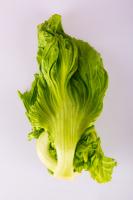What is a True Breeding Plant?
When it comes to breeding plants, there are a variety of terms and concepts that can be confusing to those who are new to gardening or agriculture. One of these terms is "true breeding plant." In this article, we will explore what exactly a true breeding plant is, how it differs from other types of plants, and why it is important for plant breeding.
Definition
A true breeding plant is one that, when self-fertilized or cross-fertilized with other true breeding plants of the same variety, will always produce offspring that are identical to the parent plant in terms of physical and genetic characteristics. This means that the offspring will exhibit the same traits and features as the parent plant, without any variations or inconsistencies. In other words, the offspring will be homozygous for all traits.
For example, if a true breeding pea plant with yellow seeds is self-fertilized, all of its offspring will also have yellow seeds. Similarly, if two true breeding pea plants with yellow seeds are cross-fertilized, all of their offspring will have yellow seeds.
Differences from Non-True Breeding Plants
Non-true breeding plants, on the other hand, will produce offspring that have a variety of traits and features. This is because non-true breeding plants are heterozygous for certain traits, meaning they have two different alleles for a particular gene. When these plants are crossed with other non-true breeding plants or self-fertilized, the resulting offspring will have a mix of alleles from the parent plants, leading to variations in physical and genetic characteristics.
For example, if a non-true breeding pea plant with yellow seeds (heterozygous for seed color) is self-fertilized, some of its offspring will have yellow seeds and others will have green seeds. Similarly, if two non-true breeding pea plants with yellow seeds are cross-fertilized, some of their offspring will have yellow seeds and others will have green seeds.
Importance in Plant Breeding
True breeding plants are important in plant breeding because they allow breeders to work with pure genetic lines that have known and stable characteristics. By crossing two true breeding plants with different traits, breeders can create hybrid plants with desired traits that are predictable and consistent. This is known as hybridization.
For example, if a breeder wants to create a hybrid pea plant with yellow seeds and tall stems, they could cross a true breeding pea plant with yellow seeds that is tall with a true breeding pea plant with green seeds that is short. The resulting offspring will be hybrid plants that have yellow seeds and tall stems, as these are the dominant traits from the parent plants.
In conclusion, a true breeding plant is a plant that, when self-fertilized or cross-fertilized with other true breeding plants of the same variety, will always produce offspring that are identical to the parent plant in terms of physical and genetic characteristics. This is important for plant breeding, as it allows breeders to work with predictable and consistent genetic lines, leading to the creation of hybrid plants with desired traits. By understanding the concept of true breeding, gardeners and farmers can make informed decisions about which plants to breed and how to breed them.

 how many times do yo...
how many times do yo... how many planted tre...
how many planted tre... how many pine trees ...
how many pine trees ... how many pecan trees...
how many pecan trees... how many plants comp...
how many plants comp... how many plants can ...
how many plants can ... how many plants and ...
how many plants and ... how many pepper plan...
how many pepper plan...




























